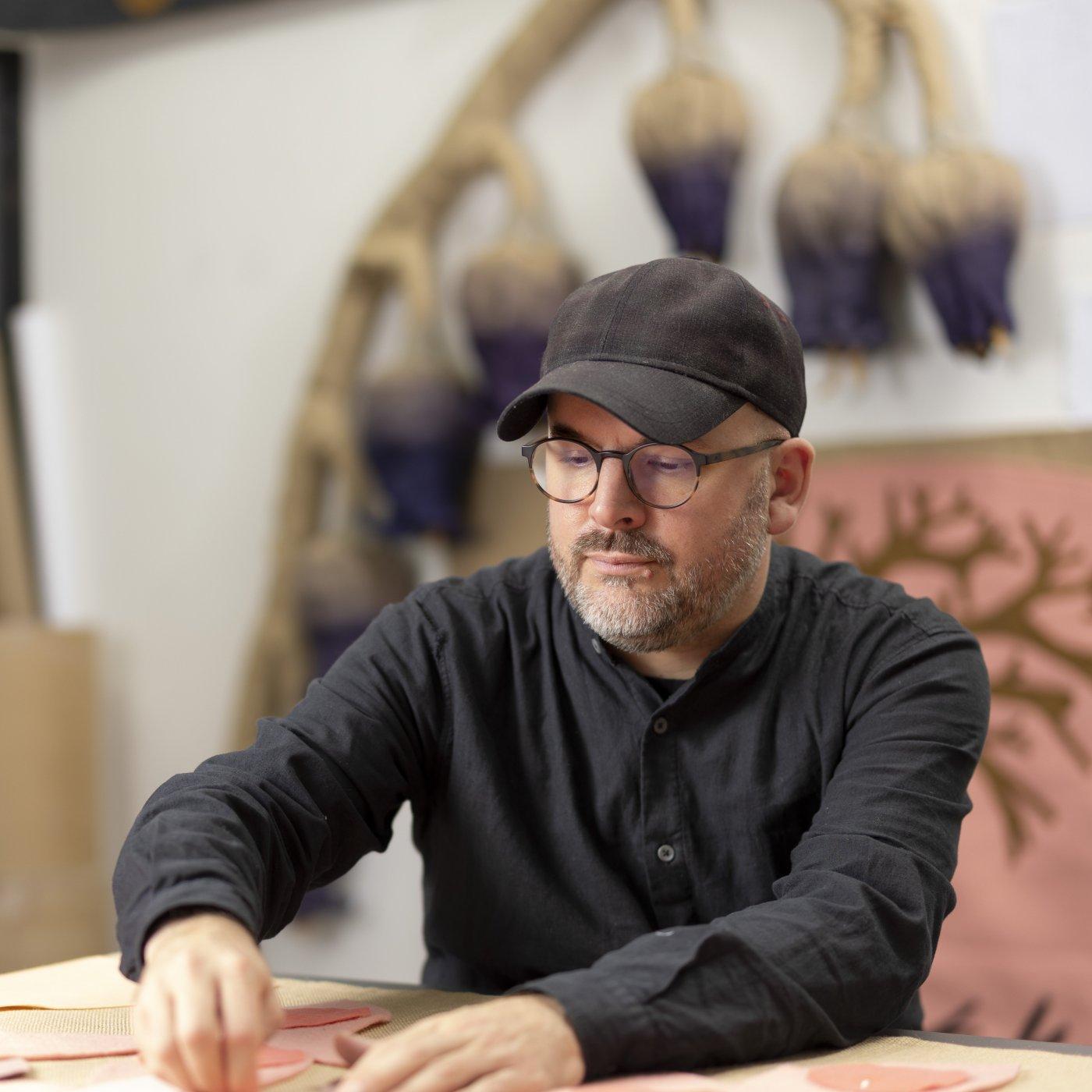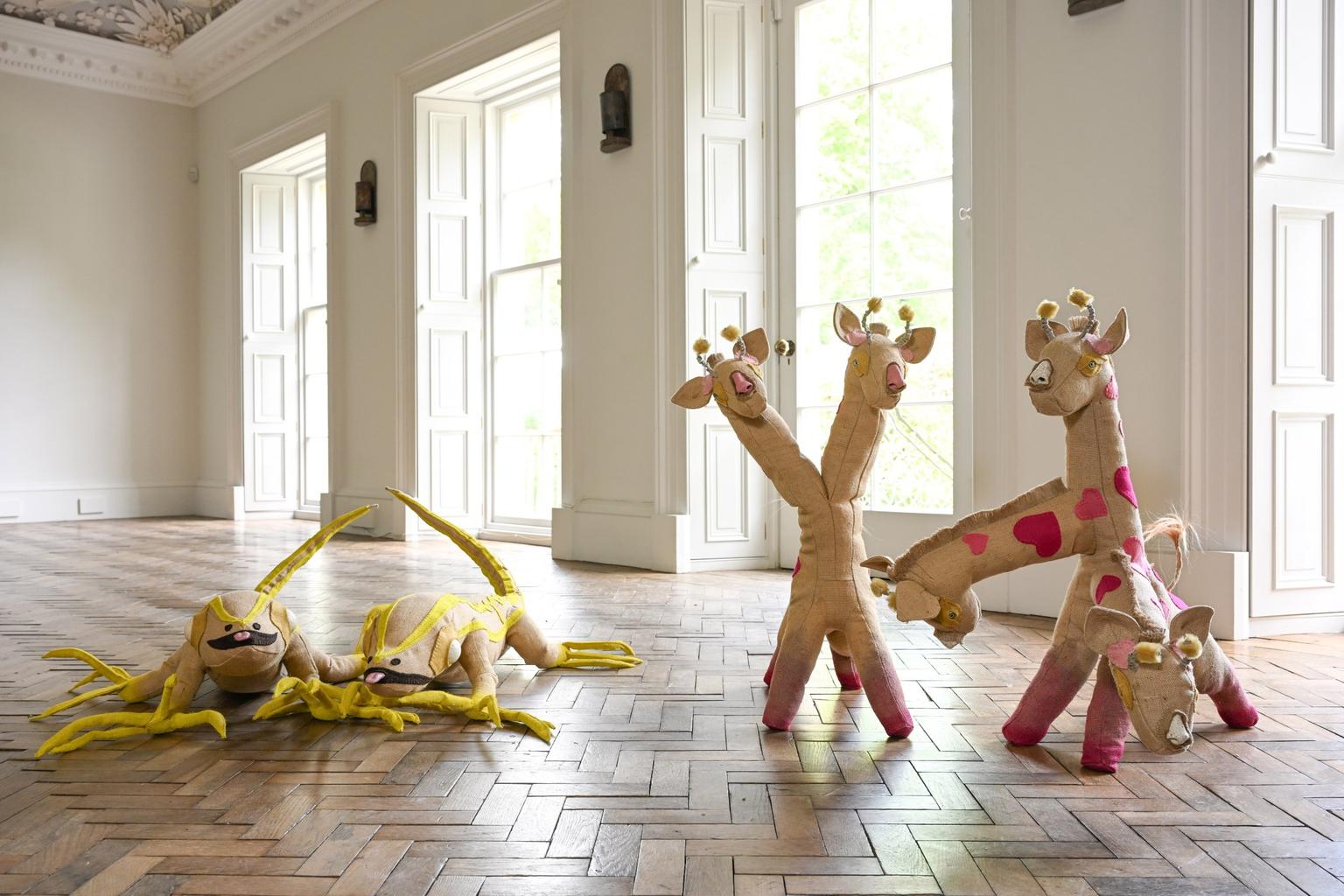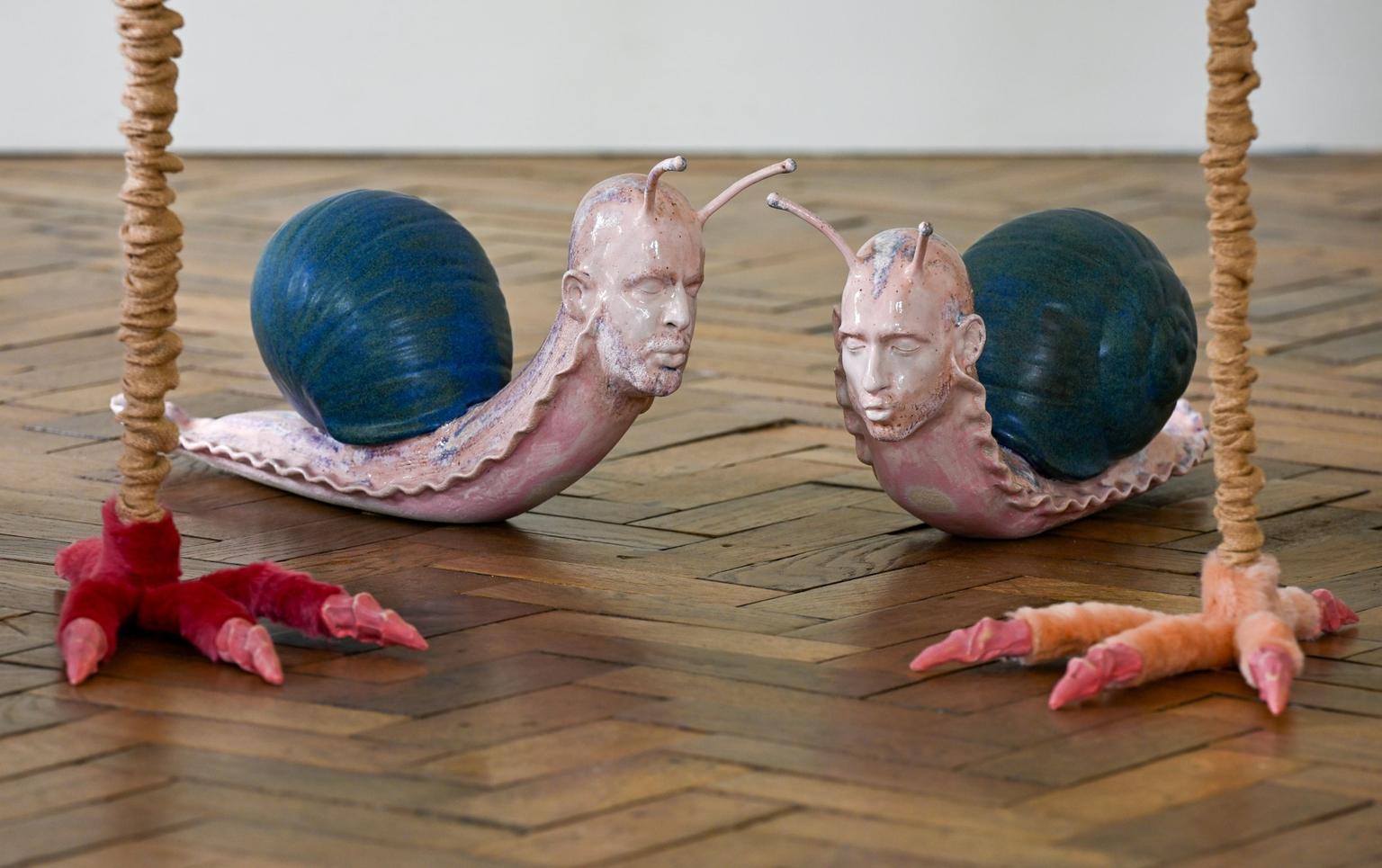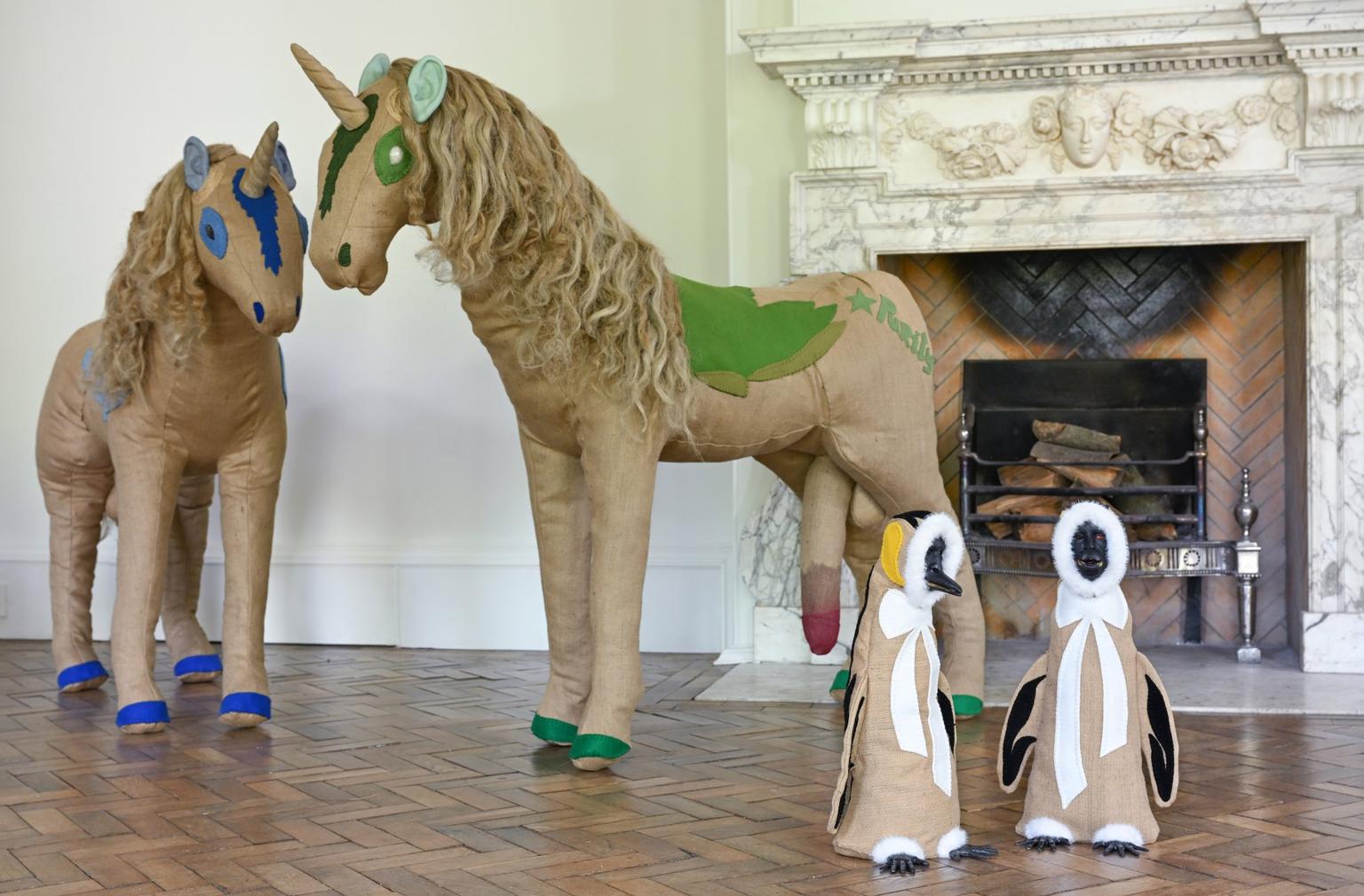Jonathan Baldock: ‘I see art as a way of communicating, a tool for connecting with other humans‘

Jonathan Baldock talks craft, queerness and the connections between all living things with Ellen Mara De Wachter ahead of his Jupiter Artland show.
A version of this article first appeared in the summer 2025 issue of Art Quarterly, the membership magazine of Art Fund.

Who is Jonathan Baldock?
London-based artist Jonathan Baldock was born in 1980 in Kent. His distinctive sculptures and immersive installations draw on elements of folklore, mythology and ritual, as well as personal and cultural histories, inviting viewers to consider their social relations with each other and with nature. His work encompasses handmade techniques, from ceramics to basket weaving and embroidery, and uses natural materials such as clay, wood and textiles – including hessian, felt, wool and linen. Recent UK exhibitions include ‘Touch Wood’ at Yorkshire Sculpture Park (YSP) in 2023-24 and ‘Jonathan Baldock 0.1%’, at London Mithraeum Bloomberg Space (to 5 July). His recently opened exhibition at Jupiter Artland, Edinburgh, includes a new body of work that explores the magical and special aspects of queerness, alongside a presentation of his 2021 installation of cocoon-like hanging sculptures, ‘Warm Inside’.
Ellen Mara De Wachter: What was your journey to becoming an artist?
Jonathan Baldock: I was very creative as a kid – I used to draw pictures of my mum wearing different dresses, and I made houses for the fairies at the bottom of the garden. But I don’t come from an artistic background, and there are no artists in my family, so my understanding of what it was to be an artist was quite limited: somebody who did watercolours on Brighton Pier, or someone who makes things to put on a wall.
Becoming an artist was a slow journey. I did an Art GCSE, and my tutors were encouraging. Then, I continued with an A-level, and a foundation degree, which I was particularly drawn to because you get to try everything. I’m not going to say that I never looked back because, of course, it’s a bumpy ride, but I always knew that I was going to do something creative.
Now I see that my mum is very creative, and I see the creativity in my family that wasn’t nurtured. I feel blessed to have had opportunities, probably due to the time in which I grew up.
EMDW: Your new exhibition at Jupiter Artland is called ‘WYRD’. Why have you chosen that as the title?
JB: ‘Wyrd’ is an Old English word, originally Norse, whose meaning holds more magical properties than the contemporary word weird, into which it has evolved. ‘Wyrd’ is not just about the odd and the unusual, but the magical and the special as well. I liked that definition of the word, especially considering the idea I had for the show.

EMDW: A central theme running through the exhibition is same-sex sexual behaviours and relationships in humans and other animals. Why did you want to address this as a subject?
JB: I grew up with a Christian background, but I don’t believe in any organised religion now. However, there’s something about the natural world, and a lot of recent scientific discoveries to do with our understanding of and our relationship to the natural world, that, for me, give purpose and meaning to existence. As a queer person, I’m aware of so many discoveries now – or that are being reported now, because they are not recent discoveries at all – which show that the natural world is extremely queer. There are same-sex relationships, transness, polyamory: everything.
It changes what I absorbed growing up about what was normal, and how that was weaponised. I’m unpacking all of these things, and it’s exhilarating to be able to look to the natural world and see that. I know it to be true because I know I’m not the only queer person on the planet, and I know we have always been here. It makes me think that the human race is colourful on purpose, queerness is natural, it’s brilliant, and it should be celebrated.
EMDW: These ideas take shape in your new sculptures of hybrid or mutant creatures. How have you developed these works?
JB: The list of animals that have these queer qualities is pretty endless. I have yet to find an animal that doesn’t have some research showing it has same-sex behaviour but I wanted to tap into the folkloric and the mythological. I’ve been drawn to the mythological since I was a child and this is something a lot of queer people can identify with. Generally, we connect with the idea of being outside society, so to attribute magical qualities to ourselves is very empowering.
I knew I wanted to make hybrid beasts, so, for instance, rather than creating a sculpture of a giraffe and saying, ‘That has been identified as having same-sex relations,’ I wanted to make a giraffe that was even more magical, so I’ve made it into a three-headed beast. I have also included body parts based on my own body, and my partner’s body. The animals will be in pairs, which is a play on Noah’s Ark, but my pairs will be versions of myself and my partner, the artist Rafał Zajko, with elements of our bodies: faces, hands, feet. Even though some of the sculptures are going to be quite monstrous, it’s also romantic.
The creatures are all made according to old 1960s, 1970s and 1980s instruction manuals for making toys, which I remember from my childhood. There was a culture of making stuff at home then. I’ve used one of the more sophisticated manuals, but I have bastardised the animals. The work also taps into the idea of the child as a free spirit who has a kind of wildness and connection with nature. All of this is rooted in queer experiences.

EMDW: Nature is a big part of your work, from the subject matter to the materials you use. How would you describe your relationship with it?
JB: I have lived in London for over 20 years but I come from the countryside, and I have a complicated relationship with it, as do a lot of queer people, who might move to the city to be free, and to not have their difference observed or pointed out. But I have loved the natural world since I was a child and, as I get older, I miss it and I long for it. It’s a vital part of being a human being. To see outside ourselves and to see the world, particularly animals and plants, is so important.
There’s this idea that animism [the belief that all natural things have spirits] makes you more empathetic. A lot of old religions or small tribal religions still have animism, and they care for the world around them. We are part of a much bigger thing; we are connected to plants and even to stones. I want to have a positive outlook on the part we can play in our relationship with nature, and that’s where faith and religion, in a way, weave into it. I have faith in the natural world.
EMDW: Sensuality is always at the heart of your work, as is your use of different media. What does that enable you to do?
JB: I see art as a way of communicating. It’s a tool for connecting with other humans, and the spaces in which you do that are important. We have such a hurried existence that to step into a space that attacks all of the senses is appealing. I love it for myself, so I want to recreate that and give it to other people. It’s about creating a shift in people’s experience, creating something other.
My work is a product of my body and I have an emotional connection to it. I’m quite an anxious person, and I find it very calming to work with my hands. It’s about the head and hand coming together, and that is very powerful. When I have used scent and sound, they are mediums to transport you, shift your consciousness, and I love that.

EMDW: How important is it for your work to be held in public collections?
JB: It is incredibly important because I make art for people to go and see. I love it when it’s not just an art audience seeing my work, and I’m well up for people disliking it. I’ve got a very thick skin. But it’s not something that I worry about, because I live in the moment of making and, for me, it’s all about being in a studio and making the work: that’s the real buzz.
I’m not in many collections: I wish I was, and I make a lot of work that probably would only survive in a collection. The work of mine that has been collected by the Arts Council, my ceramics masks, are the most commercial element of my practice, but it would be lovely if collections took the work that didn’t fit in people’s living rooms because I make a lot of that kind of work.
EMDW: Your works are fun and uplifting, even when they are dealing with serious subjects. How important is humour to you as an artist?
JB: It’s an interesting question because sometimes the idea of fun gets used against me, and the work can be dismissed as ‘whimsical’. Humour is very important to me but quite often it’s a class thing. From a working-class perspective, humour is often used to deal with serious subjects, but there is often this middle-class way of talking about serious subjects with stoicism and a seriousness that’s very Protestant. I think that you can have humour and joy and still talk about darkness and horror, because that’s a true reflection of the world that we live in.
Humour is also a powerful tool for being inclusive, because you’re more likely to engage someone with humour and warmth and kindness than you are with a dourness, which can be a kind of coldness. If anybody spends time with my work, and if they are open, then they will hopefully see that it is multilayered. Humour is a way of going under the belly of things, and you can totally talk about very serious subjects in a way that engages people. Actually, non-art people are often much more open to that. Another thing is my use of craft techniques; people can connect to the handmade quality of my work. My work is all about the human connection.
‘Jonathan Baldock: WYRD’, to 28 September, and ‘Warm Inside’, to 27 July, Jupiter Artland, Edinburgh. 50% off entry with National Art Pass.
Bronze masks by Baldock can also be seen in the group exhibition ‘More than Human’, 11 July to 5 October, the Design Museum, London. 50% off exhibitions with National Art Pass.